
Mark & Scott Kelley
For several years now we have been posting about Scott and Mark Kelly, the identical twins who both graduated from merchant marine academies and served in the Navy. Each became astronauts and both have traveled in space. Recently, Scott Kelly returned from an epic one-year mission aboard the International Space Station, the longest any American astronaut has ever spent in space.
Mark Kelly, now retired, also playing a key role in the mission. As the only identical twins to serve as astronauts, Mark is now acting a control against which to compare the physiological changes that may have taken place in his twin brother Scott during his year in space.
One change in his brother was immediately noticeable. During his year in zero gravity, Scott Kelly has grown two inches taller than his twin brother Mark. Scott reports that overall he “feels pretty good. ” He will now begin what may be a year-long project to monitor his health.

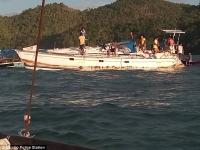 Two fisherman came across a macabre scene on a dismasted derelict sailboat, drifting 40 miles off the coast of Barobo in Surigao del Sur in the Philippines. A figure, the color of dry plaster, was slumped over the chart table with one hand appearing to reach for the radio handset. It was the
Two fisherman came across a macabre scene on a dismasted derelict sailboat, drifting 40 miles off the coast of Barobo in Surigao del Sur in the Philippines. A figure, the color of dry plaster, was slumped over the chart table with one hand appearing to reach for the radio handset. It was the 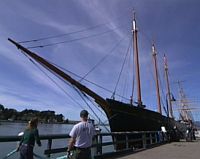 Last week, the 1895 lumber schooner
Last week, the 1895 lumber schooner  Has Royal Caribbean Lines learned its lesson? Just days after a
Has Royal Caribbean Lines learned its lesson? Just days after a 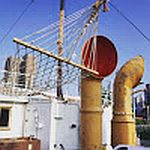
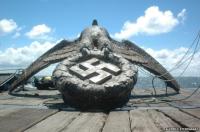 What has been referred to as the Second Battle of the River Platte, may be coming to an end. In 2010, we
What has been referred to as the Second Battle of the River Platte, may be coming to an end. In 2010, we 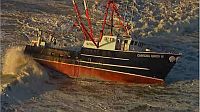 Those of us around New York harbor have been watching a dramatic rescue unfold this morning. Around 2 AM, the 76-foot scallop fishing vessel
Those of us around New York harbor have been watching a dramatic rescue unfold this morning. Around 2 AM, the 76-foot scallop fishing vessel Recent studies suggest that sea levels are now rising at the fastest rate in the last 28 centuries. According to two reports, increased flooding in coastal communities in America can be traced directly to increased the production of greenhouse gases from human activity. The report authors say that the problem will grow far worse in coming decades. Nevertheless, the governments of some states most impacted by the rising waters are opting to deny that the problem even exists.
Recent studies suggest that sea levels are now rising at the fastest rate in the last 28 centuries. According to two reports, increased flooding in coastal communities in America can be traced directly to increased the production of greenhouse gases from human activity. The report authors say that the problem will grow far worse in coming decades. Nevertheless, the governments of some states most impacted by the rising waters are opting to deny that the problem even exists.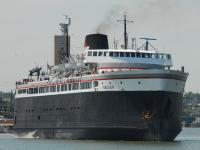 The Department of the Interior recently announced that the
The Department of the Interior recently announced that the 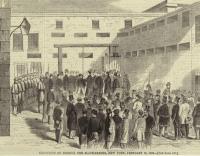
 Some folks think that those around New York City are unfriendly, which couldn’t be further from the truth. Here is a short video of a seal resting on a patch of ice in the Hudson River waving at Megan Viscovich and her co-workers who spotted the seal from their office overlooking the river in Edgewater, NJ. As reported by
Some folks think that those around New York City are unfriendly, which couldn’t be further from the truth. Here is a short video of a seal resting on a patch of ice in the Hudson River waving at Megan Viscovich and her co-workers who spotted the seal from their office overlooking the river in Edgewater, NJ. As reported by 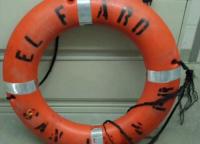 Why did Captain Michael Davidson set a course that brought his ship,
Why did Captain Michael Davidson set a course that brought his ship, 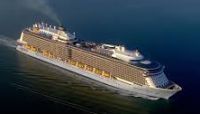 A few days after the
A few days after the 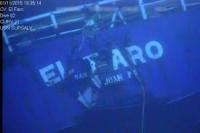 There are still almost as many questions as answers as to why the US flag ro/ro
There are still almost as many questions as answers as to why the US flag ro/ro 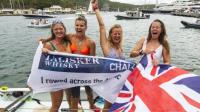






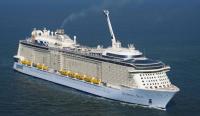 In recent years, there have been many claims made that modern cruise ships are inherently unstable and unseaworthy. Naval architects, shipyards, and regulators, have replied, “No, they are not,” but the argument continues. Recently, the Anthem of the Seas put the argument to the test. As ungainly, bulky and high-sided as she indeed is, she did rather well under terrible conditions. Here is an article I wrote for
In recent years, there have been many claims made that modern cruise ships are inherently unstable and unseaworthy. Naval architects, shipyards, and regulators, have replied, “No, they are not,” but the argument continues. Recently, the Anthem of the Seas put the argument to the test. As ungainly, bulky and high-sided as she indeed is, she did rather well under terrible conditions. Here is an article I wrote for 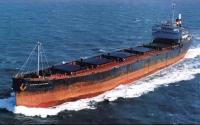 Thirty-three years ago today, on February 12, 1983, the collier
Thirty-three years ago today, on February 12, 1983, the collier